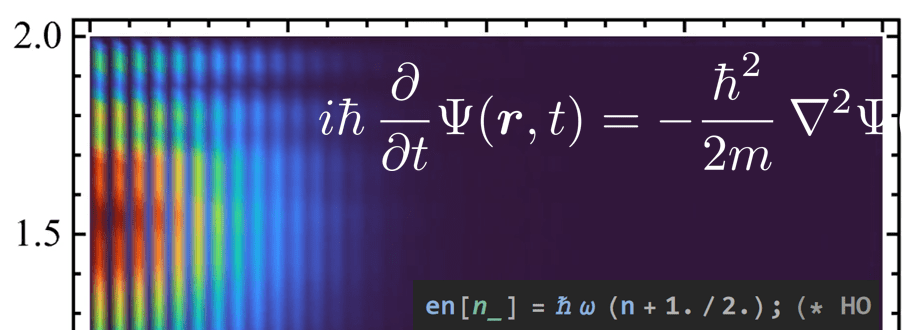This animation shows the time dependence of a quantum mechanical ball in a box. The initial condition is given by a Gaussian wave packet in the center of the infinite square well with a finite initial momentum. The color coding serves to display |Ψ(x,y;t)|² from small values (blue) to large values (dark red). We use natural units, ℏ=c=1, so we measure both position and time in inverse mass/energy. In the code, we set m=1, so we have x⋅m, y⋅m and t⋅m for position and time.
What to learn from this simulation?
- Animations can not only be done for one-dimensional QM, but easily also for the two-dimensional case.
- This is the generalization of a Gaussian wave packet in the infinite square well, to two dimensions. This problem was first posted in a graduate QM I course at GW in Spring 2018.
- The initial condition is chosen such that the wave packet ("ball") starts out with a positive momentum to the upper right at t=0.
- It is then reflected by the right wall, being squeezed together for a short moment, but otherwise behaving quasi-classical.
- As time goes by, the ball becomes larger and larger (diffusion of the wave packet, can be explained by looking at its Fourier components in momentum space).
- While it bounces back from the upper side, one also sees ripples - they can be explained as standing waves of incoming and outgoing components in superposition while the ball is close to a border ("The ball interferes with itself").
- Numerical effects: When bouncing from the left and right wall, one does not see such ripples. Not because they aren't there, but the simulation itself has a finite resolution, and the expectation value of momentum in x-direction is larger than that in y-direction, such that these ripples are of shorter wave length.
- Also, it is interesting to see the representation of the initial condition in the space of Fourier coefficients, c. They appear like this:

